A full-time CTO can be expensive and unnecessary for an early-stage startup. However, as your company grows, it reaches a point where your team’s technical skills may not be enough to handle scaling, security, or complex product decisions. This is when a fractional CTO comes in.
In this article, we’ll explain what a fractional CTO does, the value they bring to your business, when to hire one, and what to consider when choosing among potential candidates.
What is a fractional CTO?
A fractional CTO is a Chief Technology Officer who works with a company on a part-time or contract basis instead of being a full-time executive. They provide senior-level technical leadership and strategy without the long-term cost of hiring an in-house CTO.
A fractional CTO typically works closely with the CEO or founder to align technology goals with business priorities. They may also collaborate with
- the Chief Product Officer (CPO) and product managers to ensure the product vision is supported by the right technical strategy;
- engineering teams; and
- investors or board members when discussing technical risks and scalability.
Depending on your needs, fractional CTOs can be brought in under different arrangements. Some work part-time, overseeing your technology direction a few days a week. Others are project-based, helping with specific goals like building an MVP, scaling infrastructure, or leading a tech audit. In some cases, they serve in an advisory capacity, guiding your team and founders on high-level technology and product decisions.
What does a fractional CTO do?
A fractional CTO handles many of the same responsibilities as a full-time CTO but on a flexible schedule. Here’s an overview of what they typically do.
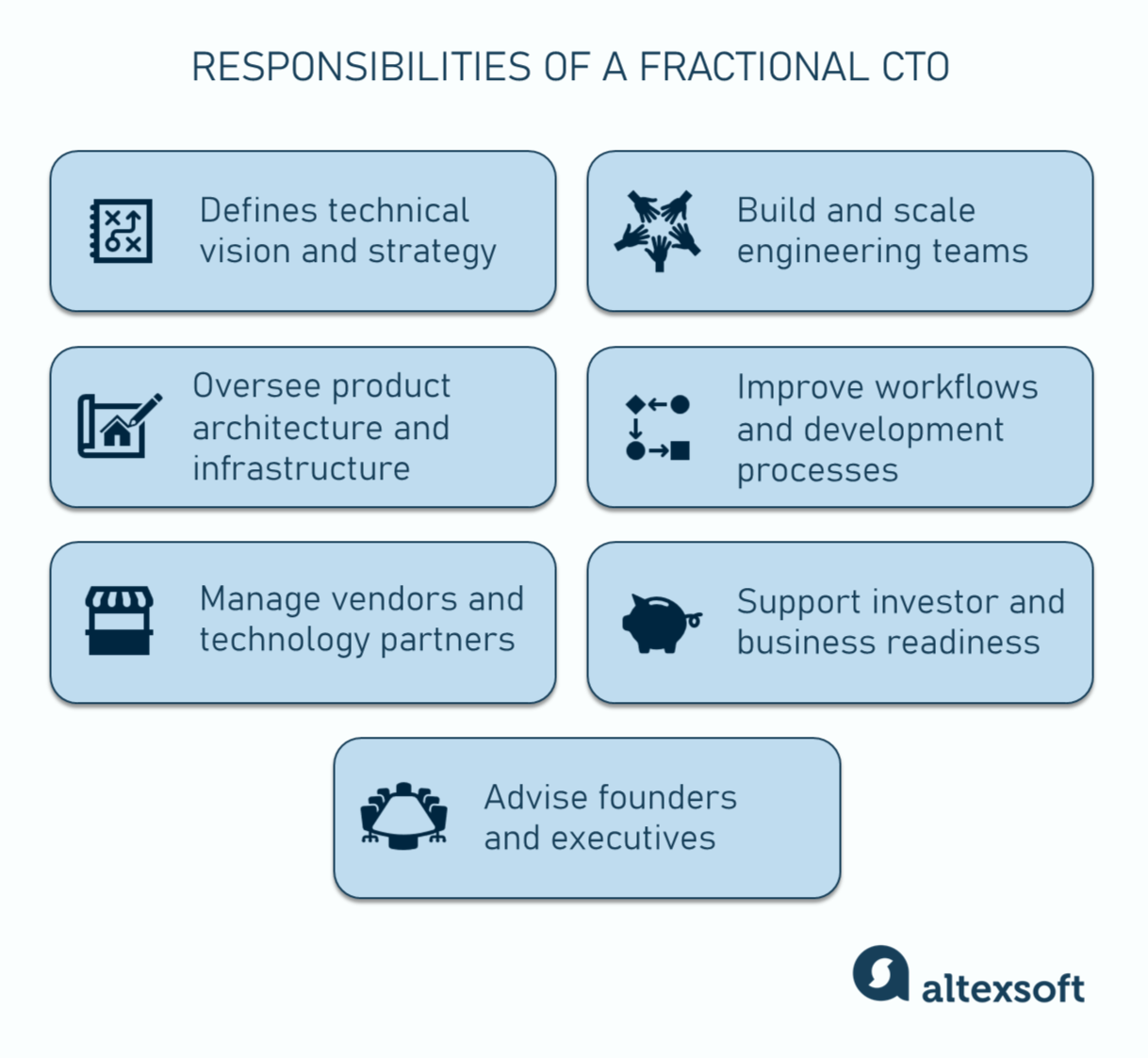
Define technical vision and strategy. They set the overall technological direction for your product, ensuring it supports your company’s long-term goals and growth plans.
Build and scale engineering teams. A fractional CTO helps you hire the right developers, set up team structures, and put in place clear processes for collaboration and delivery.
Oversee product architecture and infrastructure. They review your product’s technical setup, recommend improvements, and make sure the architecture can handle future scaling and security needs.
Improve workflows and development processes. Fractional CTOs often help teams adopt better development practices—such as version control, testing, CI/CD, or agile workflows—to improve speed and quality.
Manage vendors and technology partners. They evaluate third-party tools, negotiate with service providers, and ensure integrations fit your technical strategy and budget.
Support investor and business readiness. When preparing for funding rounds or due diligence, a fractional CTO helps organize technical documentation, outline your product roadmaps, and explain the technical side of your business to investors.
Advise founders and executives. They act as a trusted advisor to non-technical founders and leadership teams, translating technical topics into clear business terms and helping shape product direction.
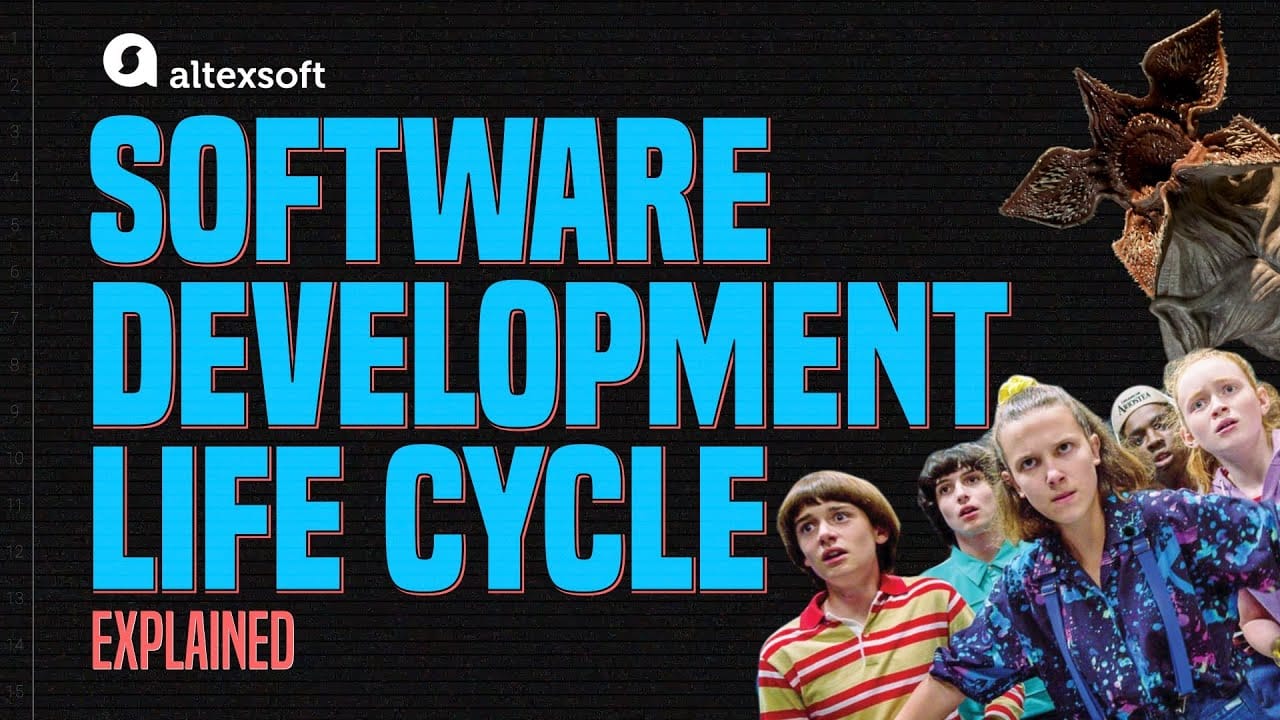

When should you hire a fractional CTO?
Hiring a fractional CTO makes sense when your company needs senior technical guidance but isn’t ready for a full-time executive. There are several signs and situations that make this move worth considering.
One of the significant signs is when technology starts holding back your growth. If product launches keep stalling, performance problems persist, or your team spends more time fixing issues than building, it’s a sign you need stronger technical leadership.
Another prevalent situation is when your founding team lacks technical expertise. Non-technical founders need someone who can turn ideas into an actionable roadmap and make key decisions about solution architecture, scaling, and hiring.
A fractional CTO is also valuable when preparing to raise funding. Investors want to see a clear technical plan and someone who can speak confidently about infrastructure and long-term direction. Having a fractional CTO involved in due diligence gives your company more credibility and helps you communicate your tech vision effectively.
As your product grows, you may also start facing challenges like rising infrastructure costs, frequent outages, or growing technical debt. These are signs you’ve outgrown your current setup and need someone who can design a stable, scalable system. Similarly, if your CTO recently left or you’re reorganizing, a fractional CTO can step in to bridge the leadership gap and keep projects on track.
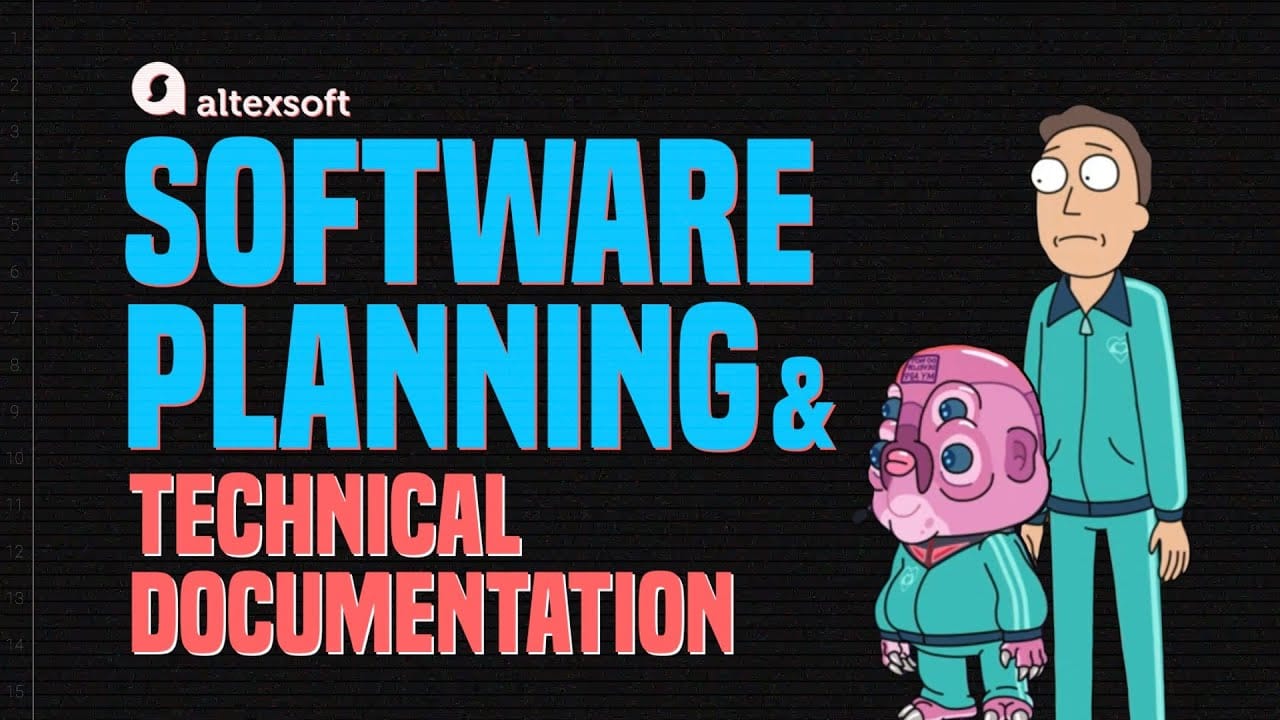

What does it take to build great software and carry all present and future stakeholders along? Watch this video to find out.
Fractional CTO vs. full-time vs. interim CTO
Fractional CTOs aren’t the only option when it comes to technology leadership. Other common setups include full-time and interim CTOs. While their responsibilities are similar, there are key differences. Here’s how these roles compare.
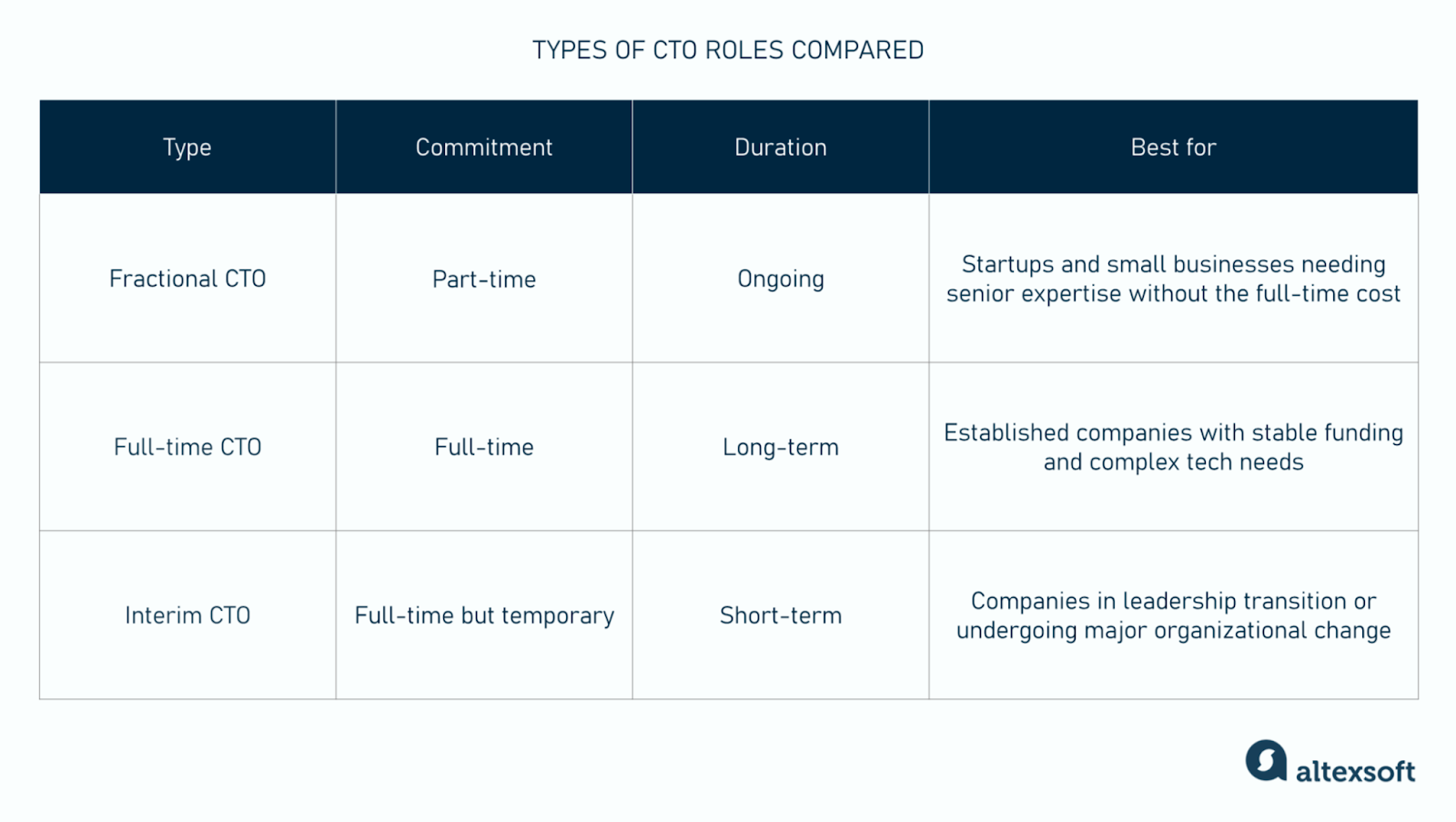
A fractional CTO works part-time, providing ongoing strategic guidance. This is ideal for startups needing senior expertise without the cost of a full-time executive.
A full-time CTO is a permanent member of the leadership team. They manage the engineering department, own the long-term product and technology vision, and are involved in daily decision-making. This role is better suited for companies with stable funding, larger teams, and complex technical needs that require hands-on leadership.
An interim CTO is a short-term, full-time leader who steps in during a transition period. They might fill the gap after a CTO leaves, prepare the company for a new phase, or lead during restructuring. Once the company hires a permanent CTO or completes the transition, their role ends.
How much do fractional CTO services cost?
The pricing structure and cost of fractional CTO services depend on the type of engagement you choose whether hourly, monthly, or per project. Expect these costs for a US-based fractional CTO.
- Hourly rates usually run from about $100 to $350 per hour.
- Ballparked, monthly retainer or part-time engagements cost about $4,000 to $12,000 per month.
- Project-based work ranges from $5,000 to $50,000, depending on complexity.
Factors that affect the final amount include the professional’s experience and geographic location, the assignment’s complexity, and the company’s size.
Fractional Chief Technology Officer background: Where do they come from
Behind every fractional CTO is years of technical growth, leadership experience, and a deep understanding of how technology drives business outcomes. Most start as engineers, developers, or software architects and gradually take on broader responsibilities—leading teams, defining strategies, and making high-impact technical decisions.
The table below provides real-world examples of how different professionals advanced in their careers to become CTOs. It highlights their education, skills, and experience.
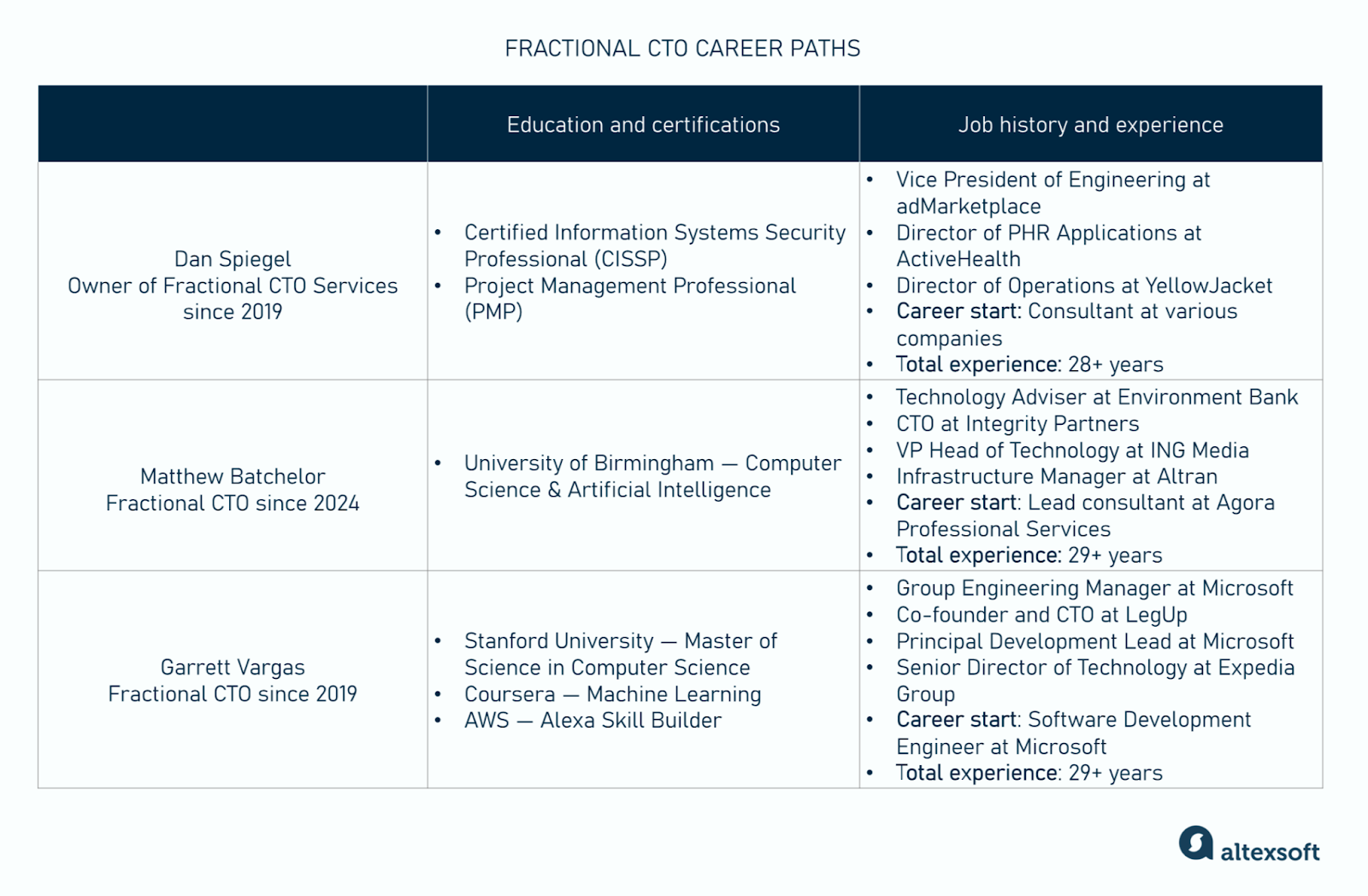
Looking at the professionals highlighted in the table, one thing is clear: There’s no single path to becoming a fractional CTO. However, there are some patterns that stand out.
Most fractional CTOs have spent decades building technical and leadership experience with different industries, tools, and technologies. The professionals listed in the table each have over 20 years under their belt.
They’ve held roles such as software engineer, DevOps engineer, engineering manager, and CTO, often working in both startups and large enterprises. This range of experience helps them understand how technological decisions impact a business at every level.
To succeed as a fractional CTO, professionals need a mix of the following technical, business, and interpersonal skills.
- Technical expertise: software development, cloud infrastructure, data management, and solution architecture
- Strategic thinking: aligning technical goals with overall business strategy
- Leadership and communication: managing teams, mentoring engineers, and communicating with non-technical founders or executives
- Decision-making: prioritizing resources, balancing innovation with practicality, and managing risks
- Time management: balancing engagements with multiple clients and making sure each gets the required attention
- Adaptability: working across industries and adjusting quickly to different business environments
While an advanced degree or technical education can be helpful, it’s not always required. What matters more is real-world experience—leading teams, scaling systems, managing stakeholders, and aligning technology with business goals. Still, a strong educational foundation can give aspiring CTOs a head start, especially early in their careers.
Do you still need a fractional CTO in the age of AI?
Seeing as AI agents and AI coding tools have quickly changed how we develop products, some may wonder: Is a CTO, fractional or otherwise, still necessary in this day and age?
Short answer: yes. Let’s explore the long answer in detail.
One thing to remember is that AI tools are, at the end of the day, not always reliable and their outputs can be unpredictable. That’s why even platforms like OpenAI include a note that says, “ChatGPT can make mistakes. Check important info.” That simple disclaimer shows the limits of AI’s reliability. Because of this, human-in-the-loop systems and AI guardrails are still essential.
Another key point is that AI tools don’t understand what it takes to scale a production system; only humans with the right expertise do. Building for hundreds of thousands of users involves deep knowledge of infrastructure, scalability, database management, and security. Running platforms like Uber, Amazon, or Netflix requires knowledge of event streaming, container and database orchestration, DevOps principles, chaos engineering, technical planning, complex architecture, etc.—things AI tools can’t handle on their own. At least, for now.
Besides that, AI systems aren’t always up to date with the latest frameworks, threat patterns, or security practices. They can’t assess which tools are right for your specific stack, nor can they make judgment calls about trade-offs between speed, cost, and stability. A CTO brings that awareness and applies it in real time, adapting as technology and the business evolve.
Ultimately, AI tools cannot handle the advanced system design or operational complexity required. At best, they can generate code or connect databases to help build basic full-stack apps. However, they lack the ability to think in terms of distributed architecture, redundancy, or production scalability.
AI tools can't design failover systems—like those that were needed during the AWS outage on October 20, 2025, in the US-EAST-1 region—manage container orchestration or address real-world challenges like network latency and cloud failures. These are areas that still demand human expertise, strategy, and long-term technical planning—the kind that a CTO, fractional or otherwise, brings to the table.
Drawbacks and limitations of a fractional CTO
While hiring a fractional CTO offers flexibility and cost savings, it is not always the perfect solution for every company. There are a few limitations you should understand before deciding to go this route.
Limited availability. A fractional CTO typically works with several clients at once. This means they are not always available for urgent issues or day-to-day decisions. If your company requires full-time technical oversight or real-time leadership for a growing engineering team, this limited availability can slow progress.
Less immersion in company culture. Because they split their time between multiple organizations, fractional CTOs may not fully absorb your company’s culture, values, or internal dynamics. This can make it harder for them to influence team behavior, build a strong engineering culture, or lead long-term change from within.
Short-term focus. Fractional CTO engagements often target short- to medium-term goals such as stabilizing systems, preparing for funding, or improving delivery processes. While this is useful for fast results, they may not always have the capacity to drive multi-year technical transformations or profoundly mentor future leaders.
Dependency risk. When a fractional CTO is the only person with deep technical knowledge of your architecture or roadmap, your team may become dependent on them. If they leave or reduce their hours, it could create a gap in strategic direction unless proper documentation and knowledge transfer are done early.
Integration challenges. Fractional CTOs can recommend best practices or structural changes, but they often rely on your internal resources to execute them. If your team is understaffed or lacks senior engineers, even the best strategy may be difficult to implement without hands-on, continuous guidance.
How to choose the right fractional CTO
If you’ve weighed the pros and cons of this approach and decided to move forward, the next step is finding the right person for the job. You can start by reaching out through your network, asking for referrals, or exploring agencies that specialize in fractional tech leadership.
Once you’ve built a shortlist of potential candidates, the question becomes How do you choose the right one? Here are some key factors to consider before making your final decision.
Match their experience to your stage of development. Look for someone who has worked with companies at a growth stage similar to yours. A CTO experienced in early-stage startups will understand how to validate ideas and build lean MVPs, while one with a scale-up background will know how to optimize systems and manage larger engineering teams.
Assess technical breadth and depth. A good fractional CTO should be fluent in modern technologies, cloud infrastructure, and software architecture. They don’t need to code every day, but they should be able to review technical decisions, challenge assumptions, and design scalable systems confidently.
Check for business alignment. The right fractional CTO should also understand your business model, market, and goals. Their strategies should tie directly to improving customer experience, cutting costs, or increasing revenue, not just technical excellence for its own sake.
Evaluate communication and leadership style. Strong communication and leadership skills are essential since they will be guiding your team part-time. Choose someone who can clearly explain complex ideas, influence decisions, and motivate your engineers without being physically present every day.
Review their track record. Ask for examples of measurable impact from past engagements. This could be faster release cycles, reduced infrastructure costs, or improved system stability. References from other founders or teams can also help you understand their working style and reliability.
Set clear expectations early. Before starting, agree on deliverables, timelines, and communication methods. Define what success looks like, whether that’s a completed technical audit, a three-month roadmap, or smoother team operations.

With a software engineering background, Nefe demystifies technology-specific topics—such as web development, cloud computing, and data science—for readers of all levels.
Want to write an article for our blog? Read our requirements and guidelines to become a contributor.

